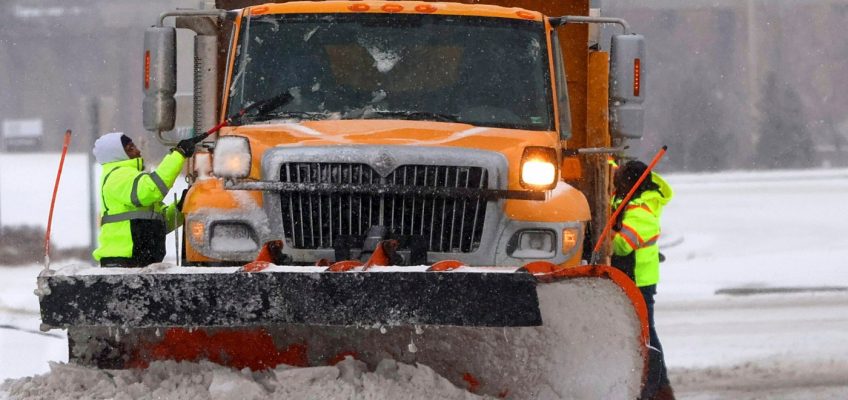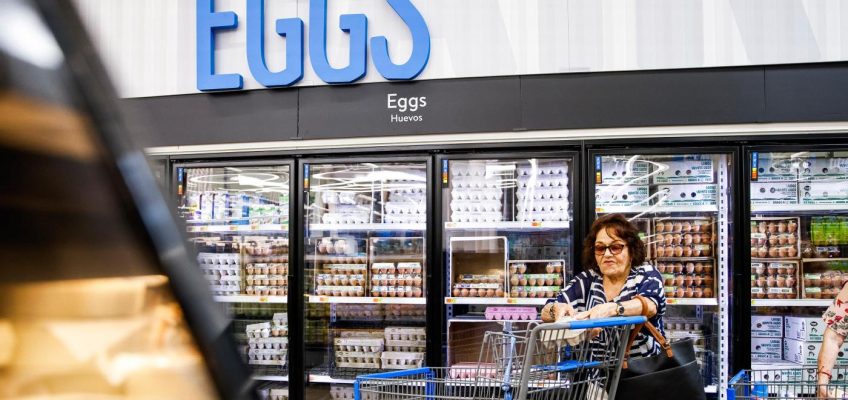By DEE-ANN DURBIN, JOSH FUNK and MARK VANCLEAVE
Egg prices are rising once more as a lingering outbreak of bird flu coincides with the high demand of the holiday baking season.
But prices are still far from the recent peak they reached almost two years ago. And the American Egg Board, a trade group, says egg shortages at grocery stores have been isolated and temporary so far.
“Those are being rapidly corrected, sometimes within a day,” said Emily Metz, the Egg Board’s president and chief executive officer.
The average price for a dozen eggs in U.S. cities was $3.37 in October, according to the Bureau of Labor Statistics. That was down slightly from September, and down significantly from January 2023, when the average price soared to $4.82. But it was up 63% from October 202, when a dozen eggs cost an average of $2.07.
Metz said the egg industry sees its highest demand in November and December.
“You can’t have your holiday baking, your pumpkin pie, your stuffing, without eggs,” she said.
Avian influenza is the main reason for the higher prices. The current bird flu outbreak that began in February 2022 has led to the slaughter of more than 111 million birds, mostly egg-laying chickens. Anytime the virus is found, every bird on a farm is killed to limit the spread of the disease.
More than 6 million birds have been slaughtered just this month because of bird flu. They were a relatively small part of the total U.S. egg-laying flock of 377 million chickens. Still, the flock is down about 3% over the past year, contributing to a 4% drop in egg production, according to the U.S. Department of Agriculture.
The latest wave of bird flu is scrambling supplies of cage-free eggs because California has been among the hardest hit states. California, Nevada, Washington and Oregon all require eggs sold in their states to be cage-free.
“We’re having to move eggs from other areas of the country that are producing cage-free to cover that low supply in those states, because those states only allow for cage-free eggs to be sold,” Metz said.
Cage-free requirements are set to go into effect in Arizona, Colorado and Michigan next year and in Rhode Island and Utah in 2030.
Demand for such specialty eggs may also be contributing to avian flu, which is spread through the droppings of wild birds as they migrate past farms. Allowing chickens to roam more freely puts them at greater risk, said Chad Hart, a professor and agricultural economist at Iowa State University.
“It’s really hard to control that interaction between domesticated birds and wild birds,” Hart said. “Some of those vectors have been opened up because we’re asking the egg industry to produce in ways that we didn’t ask them to before.”
Metz said climate change and extreme weather are also blowing some wild birds off course.
“We have birds that have been displaced by hurricanes, by wildfires, and those birds are now circulating in areas that they otherwise might not circulate or at times of the year that they otherwise may not be circulating,” she said. “And those are all new variables that our farmers are having to deal with.”
Hart said the egg industry is trying to rebuild the flock, but that also can limit supplies, since farmers have to hold back some eggs to hatch into new chickens.
Still, there is some good news on U.S. poultry farms. The price of chicken feed — which represents 70% of a farmer’s costs — has fallen significantly after doubling between 2020 and 2022, Hart said.
Durbin reported from Detroit. Funk reported from Omaha. Vancleave reported from Minneapolis.




